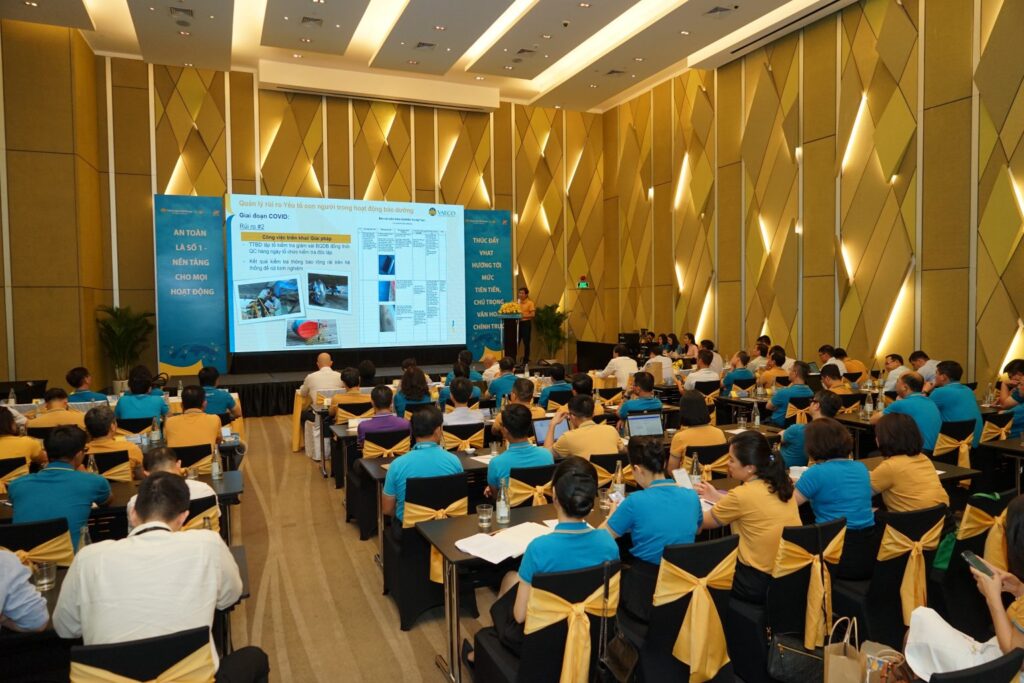Safety Culture is an important part of the aviation industry, playing a central role in ensuring the safety of passengers, property and employees.

Below are 14 things you should know about Safety Culture in Aviation
- Role of Safety Culture in Aviation: Safety Culture is an important part of safety management in the aviation industry, helping to provide managers and employees with knowledge and solutions to handle risks and ensure the safety of passengers and property.
- Components of Safety Culture in the aviation industry: Safety Culture is the combination of many factors such as standards, perceptions and beliefs of management and employees in safety work; views and attitudes of managers and employees on safety; lessons on unsafe situations; pressures of production and profits in relation to the requirements of worker safety; actions for unsafe acts; safety training for workers; and the participation of workers in such works, etc.
- The importance of cooperation when implementing a Safety Culture in the aviation industry: Cooperation between employees in the organization is one of the most important elements of the Safety Culture in the aviation industry. no, this helps ensure that everyone is working together to keep the passengers and the organization’s assets safe.
- The spirit of willingness to take responsibility: The responsibility or the willingness to stand up and take responsibility for themselves is also a core element in the Safety Culture, every employee in a business Airlines need to understand their responsibilities for safety and compliance with safety regulations.
- The role of safety training and education in building a Safety Culture in the aviation industry: Safety training/training is an integral part of building and maintaining a Safety Culture Safety in an aviation organization, in-depth training courses on issues related to aviation safety will help employees understand safety regulations and how to handle emergency situations. , the emergency that they encounter in the process of working.
- The need for recording and reporting to promote a Safety Culture in the aviation industry: Incident recording and reporting is also an essential task to help strengthen and promote the Safety Culture. Safety in the aviation industry helps leaders and managers understand clearly about safety-related issues and make accurate and appropriate decisions, decisions, and directions to solve them.
- Importance of self-inspection: Self-inspection is a good habit to develop and promote in the Safety Culture, allowing employees to self-assess their work, based on which recommendations and implement measures to improve work efficiency to improve the quality and safety of related activities.
- Compliance: Regulatory compliance is an important element of the Safety Culture in the aviation industry, all employees must comply with safety regulations to ensure the safety of passengers , aircraft and property. The safety incidents in the aviation industry usually stem from the negligence of the staff in charge and the failure to comply with the safety procedures and regulations.
- The importance of collaboration: Collaboration between different parts of an airline business or organization is a prerequisite for promoting the spread of Safety Culture internally. In that unit, the ability to cooperate and coordinate synchronously between all departments will help ensure the safety of passengers and aircraft, and reduce the risk of unfortunate accidents or incidents. Cooperation with aviation safety-related organizations is also an important part of aviation safety. Airlines need to maintain cooperation with organizations such as ICAO, FAA and other international organizations to ensure that they are always in compliance with safety standards and regulations.
- The importance of communication: The communication, conveying information, conveying opinions and directions from superior to subordinate and between departments in charge of different tasks in an organization provides Aviation services also play a large role in building and implementing a Safety Culture. All staff members need to communicate with each other accurately and understand each other to ensure the safety of passengers and aircraft.
- Monitoring and evaluating the Safety Culture in the aviation industry: Monitoring and evaluating an airline’s Safety Culture is also an important factor to ensure the safety and best operation of the airline. Monitoring and evaluation can be based on a number of famous and popular rating scales in the aviation industry such as the Hudson scale – consisting of 5 different levels of Safety Culture, with the highest level being 5.0 – Advanced level.
- Communicating the Safety Culture in the aviation industry: In addition to conducting training activities on topics related to safety management and Safety Culture, an aviation organization should also design and implement communication activities to raise awareness of employees in the organization about the Safety Culture. Good communication channels about Safety Culture can include: website, flyers, aviation magazines, games, team building, etc.
- Risk Control of the Aviation Safety Culture: Risk control is an important part of the Safety Culture in the aviation industry. Airlines need to carry out regular risk assessments to ensure that everything is going safely and can respond quickly should anything go wrong.
- Importance of updating and enhancing the Safety Culture in the aviation industry: With the goal of ensuring safety, airlines also need to regularly update and improve their capacity, information, knowledge knowledge, technology and skill sets related to the Safety Culture. This can be done through the organization of recreational activities, coaching and training programs for employees.
Today, a Safety Culture in the aviation industry is an extremely important element that helps ensure the safety of passengers, aircraft and property in this sector.
All employees of businesses and organizations operating in the field of providing aviation services need to understand and understand the Safety Culture as well as comply with safety regulations, along with monitoring and evaluation of the airline’s Safety Culture, to ensure the best quality service is provided to customers.

About Hung Viet Consulting’s consulting experience in developing safety culture in aviation
Established in 2000, Hung Viet Technology and Investment Trading Joint Stock Company (HungViet Consulting) is currently a pioneer in the field of construction consulting and promoting the Safety Culture in aviation enterprises in Vietnam.
From 2017 to now, Hung Viet has accompanied Vietnam Airlines (Vietnam Airlines – VNA) in many outstanding projects and cooperation programs such as:
- Blue Ocean Strategy Training for the whole Corporation (2017);
- Training MSc classes at Cranfield University, English for majors in New Zealand (2018-2019);
- Training Change with the World on a VNA-wide scale (2019);
- Connecting partnerships with Niagara University (USA) and RMIT University (Australia)…
Especially, Hung Viet has been implementing Safety Culture for VNA from 2018 – now and achieved various important achievements, making Safety Culture gradually become an identity, its own style and an indispensable part of the corporate culture of Vietnam Airlines.

Hung Viet Consulting wishes to have the opportunity to cooperate and provide consulting services on developing Safety Culture for domestic and foreign partners and customers not only in the aviation industry but also other industries.
Customers, business partners who need business consulting or cooperation. Please contact:

- Trading name: HUNGVIET TECHNOLOGY & INVESTMENT TRADING JOINT STOCK COMPANY.
- Tax code: 0101620786, issued on Mar 21, 2005.
- Registered business address: Villa A14, Vong Thi residential area, Buoi Ward, Tay Ho Distr., Hanoi.
- Office: Floor 7, Mitec Building, Lot E2, Cau Giay New Urban Area, Yen Hoa Ward, Cau Giay Distr., Hanoi.






 Tiếng Việt
Tiếng Việt
